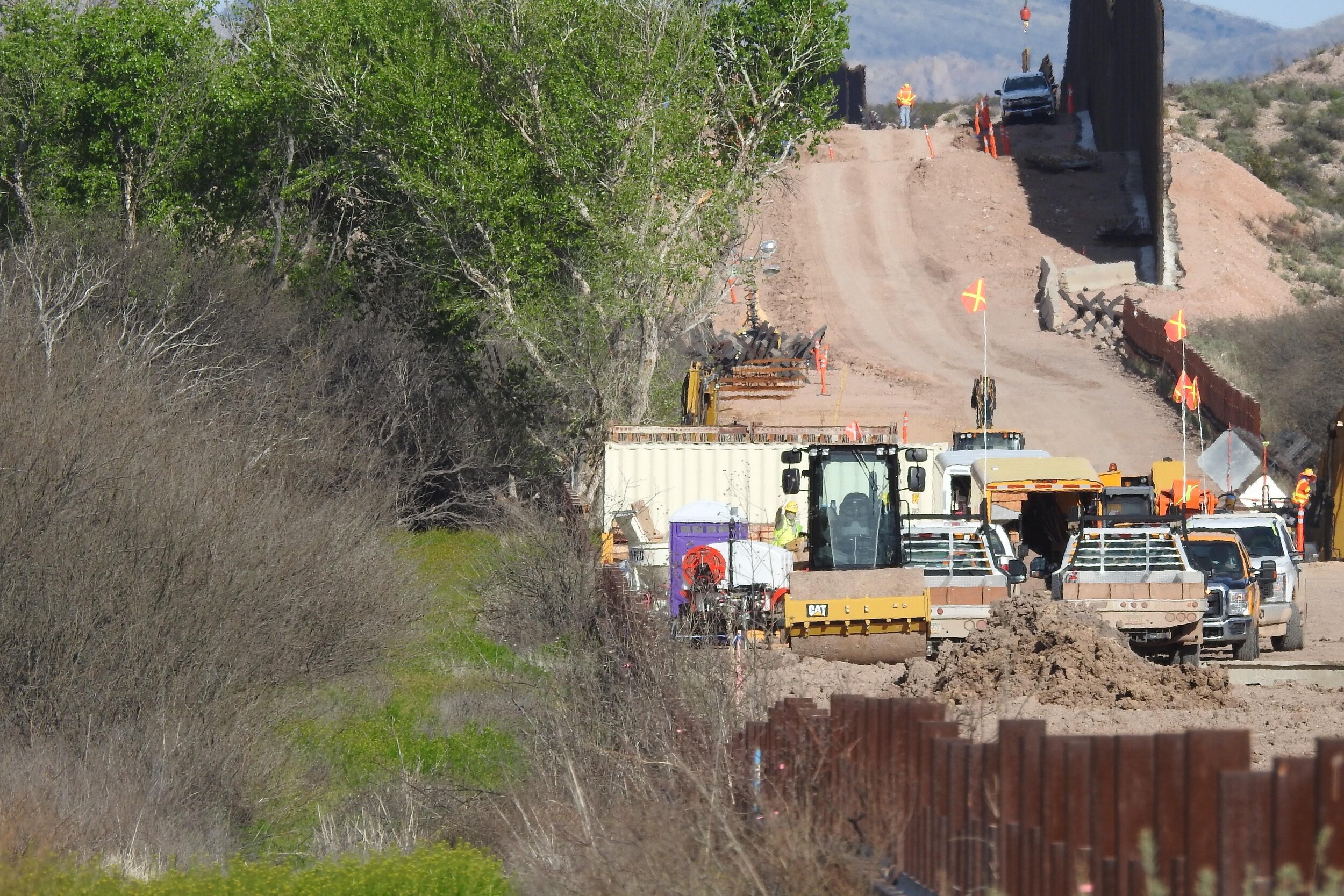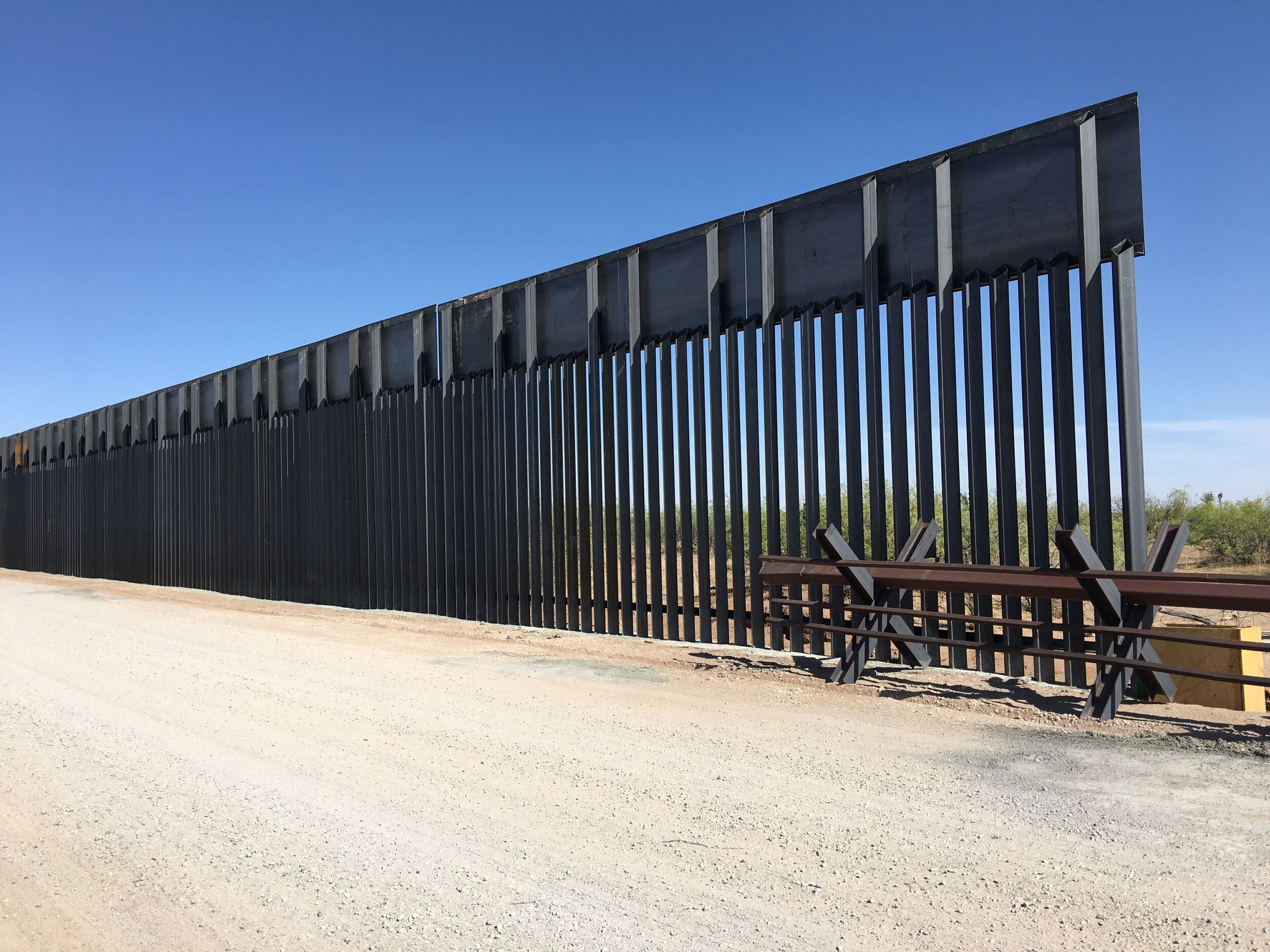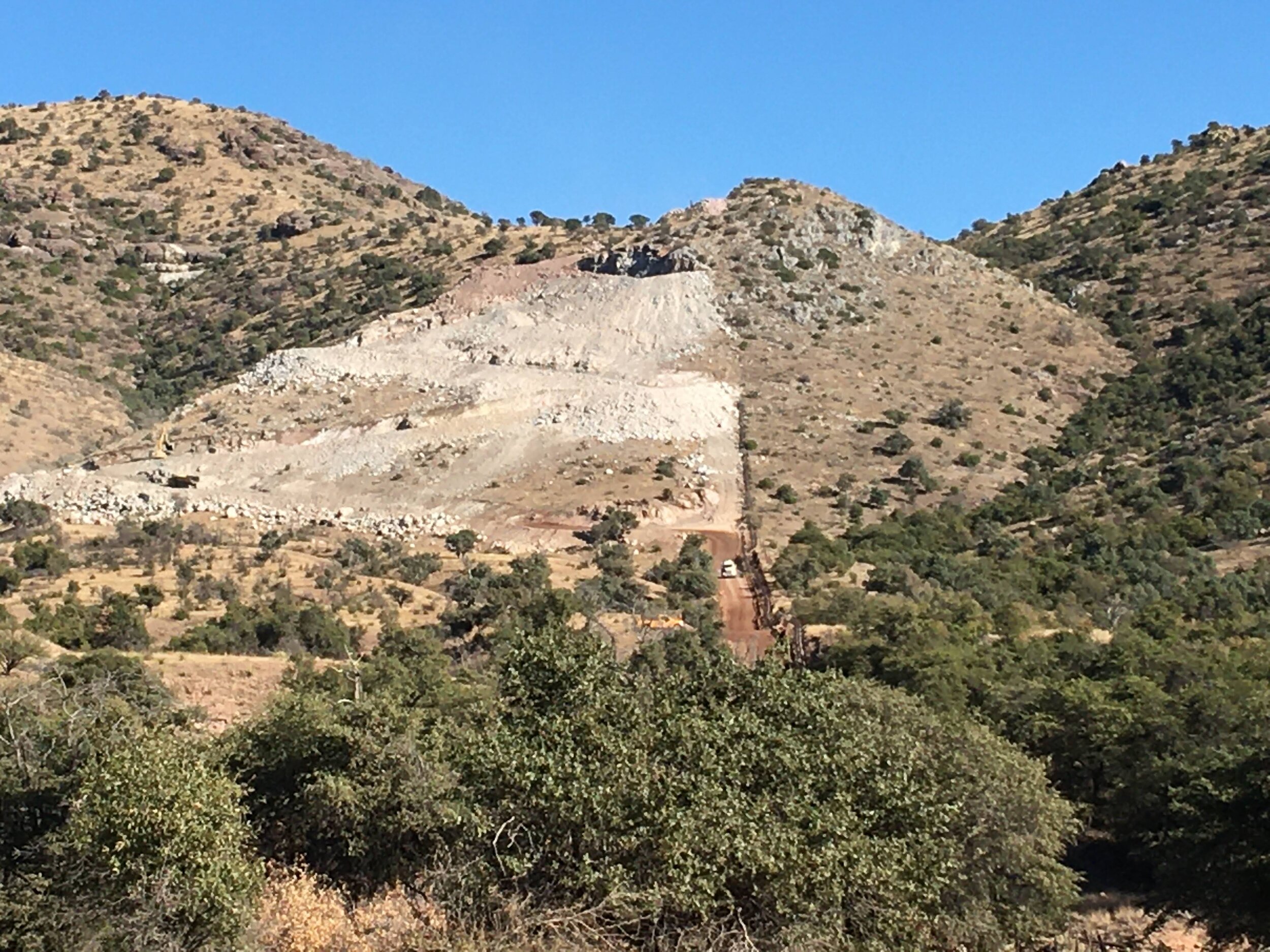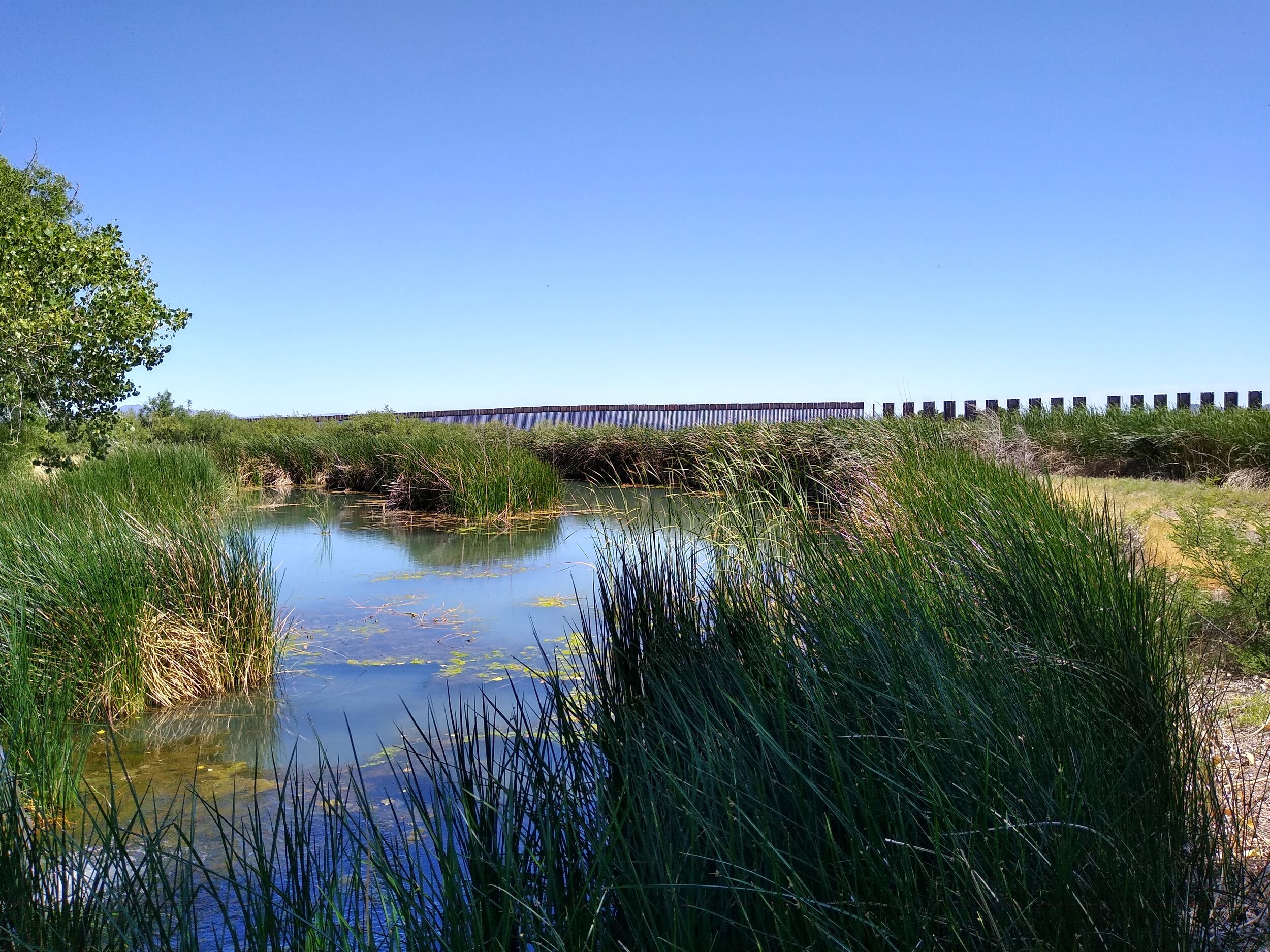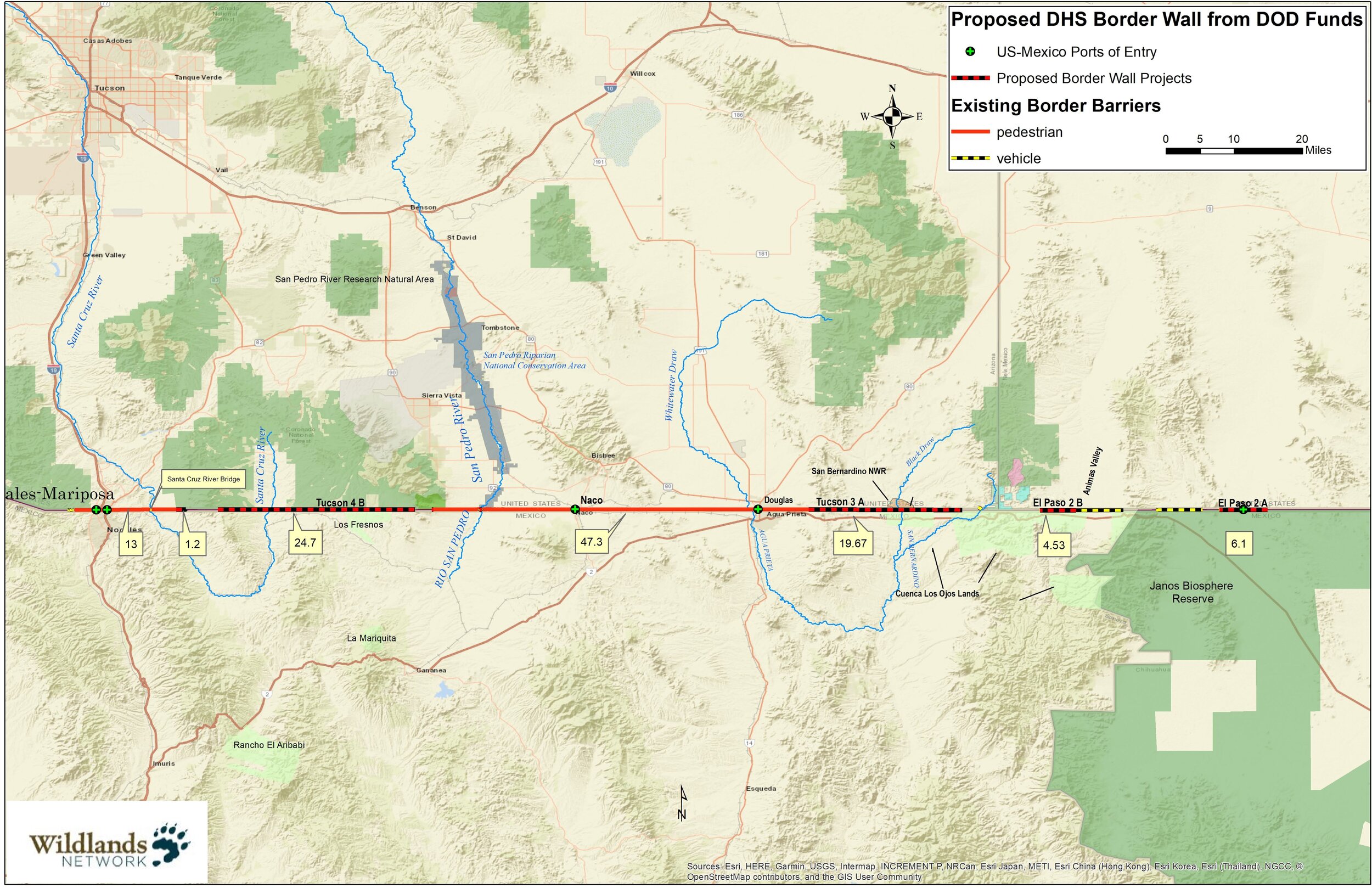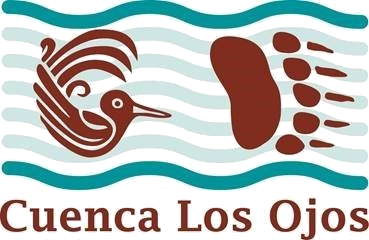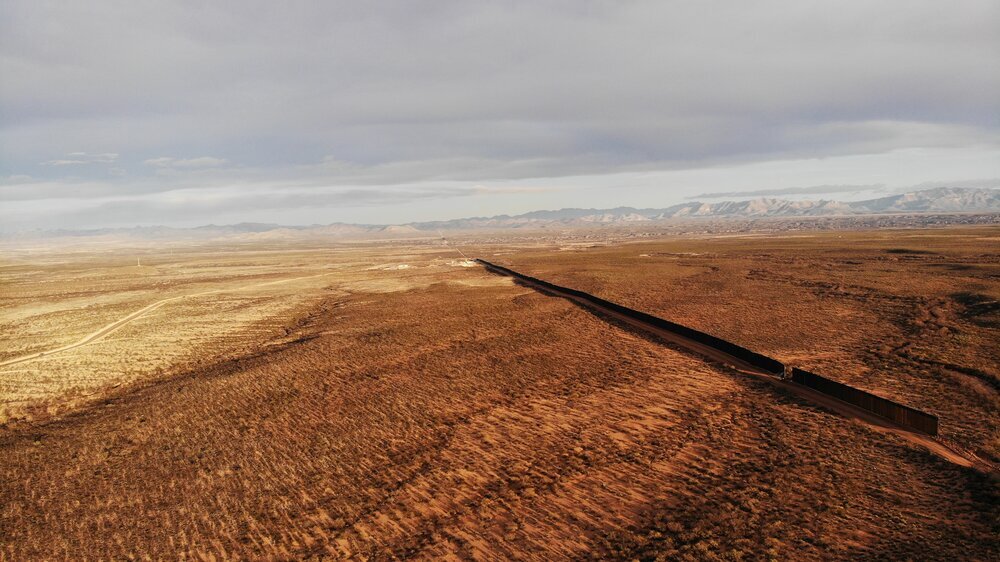
U.S.-Mexico Border Wall
Over its four decades of operations, Cuenca has remained largely apolitical about the iterations of international border fences, barriers, and walls that have been constructed; however, the wall constructed in 2019 and 2020 has so severely impacted our operations that we have been forced to respond.
First and foremost, Cuenca recognizes that border security is the primary issue affecting both Cuenca and our neighbors north of the border. The newly constructed wall is detrimental not only to the environment, but also to national security. Further, both sides have been impacted by increased crossings and the trash and garbage that these groups leave on the land.
In Guadalupe Canyon – a wild landscape that was formerly too steep and rugged for migrants to cross – the border road and wall now open up the mountainous terrain, simultaneously making it impossible for wildlife to cross and easier for migrants to access remote areas where they are less likely to be detained. Whereas migrants formerly traversed in predictable areas, the border road now makes the full 30-mile stretch accessible for those who enter the United States by cutting through the wall or climbing over it. We believe the physical wall is a short-sighted, ineffective response to national security issues, and we encourage the use of policy reforms and alternative technologies that can maintain border security without the harmful environmental impacts of a physical wall.
While there is a strong need for comprehensive policy reform to address immigration, we also believe there are steps that must be taken immediately to mitigate the worst impacts of the wall. Cuenca supports a short-term strategy outlined in the document Restoring Nature, Economy, and Security at the U.S.-Mexico Border, which includes three components:
Removal or modification of targeted segments of the border wall that cause the most harm to wildlife, critical ecosystems, and indigenous tribes who have lived in the area for centuries.
Restoration of all bi-national rivers and major streams and measures to prevent erosion and land degradation along the border wall itself.
Creation of a Borderlands Conservation Corps to provide employment in a region that has suffered from long-term under investment compounded by the border wall and the Covid-19 pandemic.
These three recommendations offer solutions to environmental and social concerns that are actionable in the near term, while we work with partners and agencies to address the long-term concerns of border security.
IMPACT
Figure 1. Example of 30’ bollard wall in relation to a human.
Cuenca has been impacted profoundly by the construction of the international border wall. In the last two years, the U.S. government has replaced the existing Normandy barrier along the border with a steel bollard border wall that in most places measures 30’ (Figure 1). This wall affects 13 miles of Cuenca, including Las Anitas, San Bernardino, and Puerta Blanca.
The newly constructed border wall impacts both Cuenca’s property and its mission. The roadway built to enable construction of the wall on the U.S. side has created unstable hillslopes that, if unaddressed, will lead to serious erosion problems with the onset of the monsoon rains. At Guadalupe Canyon, in particular, the zig-zagging road, constructed with repeated dynamite blasting, has scarred the land irreparably and poses serious concerns. Because Cuenca is down slope from the mountains, the down hill sediment flow will cause damage to the landscape and potentially to infrastructure. In addition, along the length of the border, there is concern that the 10’ deep concrete foundation will affect the flow of underground water, altering soil moisture conditions adjacent to the wall.
While the direct impact to our property is negative, the impact to ours and our partners’ missions is our greater concern. Dividing one of the few bi-national protected areas, the wall affects a host of animal life. Cuenca witnessed that Mexican wildlife dependent upon a wetland in the United States could no longer access water; in response, we repaired a well to ensure that a water source would be available on the Mexican side of the San Bernardino Valley. More recently, staff observation and camera trap photos have revealed that deer, mountain lions, black bears, javelina, and other wildlife are confused by the wall, pacing its length in futile attempts to access their former ranges.
The U.S. government has installed border lighting structures along some segments of the border wall. At Cuenca, this includes 500-watt lamps spaced at 100-meter intervals across the San Bernardino Valley. To date, this lighting has not been used, but lighting at this scale is not only a terrible waste of energy, it also has detrimental effects on wildlife. Nocturnal animals roam less and are less active when lighting is present, affecting their ability to find food and mates, and thus leading to declines in wildlife populations. Artificial lights can cause migratory birds that navigate by moonlight or starlight to veer off course, and it can cause species to migrate at the wrong times, missing optimal windows for nesting and reproducing. It is imperative that this lighting not be allowed to further harm the wildlife and ecosystems in the San Bernardino Valley.
Beyond these anticipated outcomes, there is considerable uncertainty regarding how ecosystems will respond. Environmental studies were not carried out prior to construction, and consequently there is little information regarding the ability of wildlife to adapt. We are concerned about the impacts not only on threatened and endangered species, such as the jaguar and ocelot, but also on low-flying birds, amphibians, and insects. With one of the greatest concentrations of bee biodiversity documented anywhere in the world, Cuenca is concerned about potential impacts on populations of rare insect species that occur nowhere else in the world.
Images below courtesy of Myles Traphagen, Wildlands Network.


